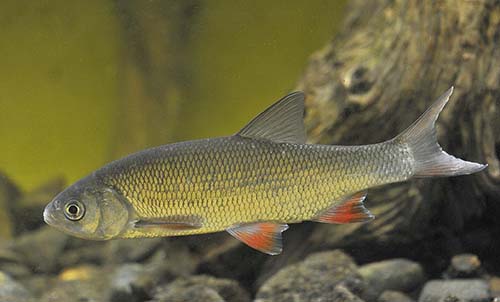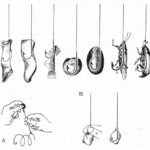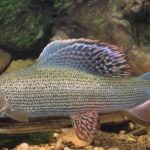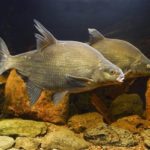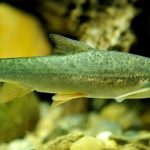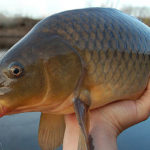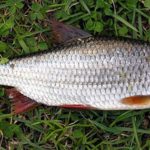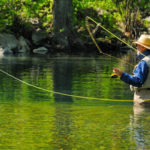O pokrewieństwie jazia z kleniem świadczy podobne, krępe ciało. Kategoryczne wymagania wobec środowiska, a także – jak się zdaje – pewna niechęć do przystosowywania się pozwalają jaziowi zasiedlać tylko ograniczony obszar przestronnych, głębokich, umiarkowanie wartkich podgórskich i nizinnych odcinków rzek. W wodach przestronnych i głębokich umie się zadomowić na monotonniejszych odcinkach, w bardziej ograniczonych przestrzennie zajmuje tylko urozmaicone odcinki, gdzie ma pod dostatkiem miejsc mogących służyć za schronienia. (Hołduje, jak widać, zwyczajom typowym i dla innych członków rodu – klenia i jelca.) Latem stadka jazi zatrzymują się w otwartej przestrzeni na granicy bystrych i spokojnych odcinków, w chłodniejszych porach roku aktywność jazia stopniowo zmniejsza się; wtedy stadnie wędruje poza główne koryto, do spokojniejszych odcinków, ślepych odnóg i głębszych, rozległych zatok. W zbiornikach może żyć tylko pod warunkiem odpowiedniej jakości ich wody; odcinki o dużym zamuleniu omija, a przede wszystkim wyszukuje miejsca, gdzie roślinność podwodna jest gęsta, woda zaś przejrzysta. Zupełnie dobrze radzi sobie jaź także w szerszych, przepływowych (przynajmniej częściowo) kanałach melioracyjnych, w których wybiera miejsca z obfitą roślinnością. W starorzeczach utrzymuje się zazwyczaj tylko w pierwszych latach, wraz z ich starzeniem jego stan się zmniejsza.
Pod względem aktywności żerowej jaź stara się naśladować klenia i umie wytrwale, nieprzerwanie szukać pokarmu. Mniejszy pysk nie pozwala mu jednak przyjmować tak zróżnicowanych kąsków i w jego jadłospisie przeważają mniejsze rodzaje larw owadów wodnych, nie gardzi miękkimi roślinami, zbiera z wody również nasiona. W lecie, kiedy ma zwyczaj przebywać głównie przy powierzchni wody, nie pogardzi także unoszonymi przez wodę owadami lądowymi. Skłonność do drapieżnictwa wykazują tylko największe okazy, a i to raczej sporadycznie.
Jako górną granicę wagi jazia podaje się 6-8 kg, ale na ogół nie spotyka się takich okazów. Mimo że miejscami jaź występuje w dużych ilościach, najczęściej łowimy 1,5-2 kg egzemplarze. Rośnie podobnie jak kleń, a więc dość wolno, i dopiero w 10. roku życia osiąga długość 33-38 cm. Rekordowe jazie mogą więc mieć za sobą bujną przeszłość.
Płciowo dojrzewa w 3.-4. roku, tarło odbywa w kwietniu–maju w licznych grupach, bardzo burzliwie, ikrę składa na rośliny wodne.
Ze względu na obyczaje jazia za najodpowiedniejsze metody należy uważać łowienie przepływanką i muszkarstwo; najskuteczniej łowi się w ciepłych porach roku. Z polskich doświadczeń wynika, że najbardziej sprzyjający jest maj (25% całorocznych połowów), a w ciągu całego lata wyniki są stosunkowo wyrównane (maj — sierpień; 71% połowów). Można, oczywiście, łowić także w chłodniejszych porach roku osiągając – przy systematycznym zanęcaniu – stosunkowo dobre wyniki. W bardziej przestronnych, umiarkowanie wartkich ciekach można z powodzeniem łowić nawet przez całą zimę, szczególnie skutecznie przy dużym zachmurzeniu i podczas opadów śniegu.
Przy połowie jazia trzeba jednak pamiętać o pewnych osobliwościach dotyczących zarówno wyboru sprzętu, jak i techniki połowu. Wędzisko ma być nie tylko dostatecznie lekkie, żebyśmy mogli łowić z wyczuciem, ale powinno być także miękkie, najlepiej o parabolicznej akcji, tak by umożliwiało delikatne zacięcie w kruchym pyszczku jazia. Lepsze są wędziska dłuższe, także ze względu na konieczność wybierania jak najcieńszych żyłek – od 0,12—0,15 do 0,18 mm.
Specyficzna technika połowu jest podyktowana pewną ospałością jazia podczas zdobywania pokarmu. Tak jak na zdecydowane, energiczne brania innych ryb odpowiadamy równie energicznym zacięciem, tak na ślamazarne, ledwie wyczuwalne branie jazia trzeba reagować równie delikatnym zacięciem. W zasadzie trudno to nawet nazwać zacięciem: wystarczy tylko wędkę przytrzymać, a haczyk z łatwością wniknie do delikatnego pyszczka. Do leniwego sposobu podchodzenia jazia do zdobyczy trzeba dopasować także metodę prowadzenia przynęty. Zbyt szybko płynącej albo nie zauważy, albo raczej nie zechce się za nią fatygować. Zbyt wolno prowadzona przynęta może wzbudzić jego podejrzliwość. Znalezienie złotego środka wymaga w tym wypadku wytrwałego treningu.
